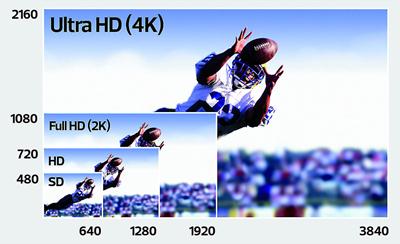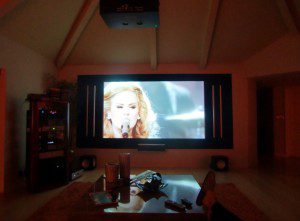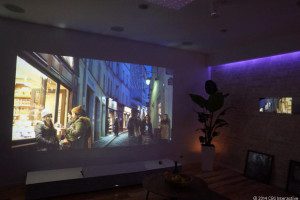
The Point of Diminishing Return
They say that products evolve until they reach a point of perfection, where further improvements are a waste of time. This is called the “point of  diminishing return”. For home audio video enthusiasts, the last few years have been extraordinary. Digital projection reached 1080p native video resolution with Blu-ray, also offering audiophiles an audio soundtrack that’s bit-for-bit identical to the original master recording.
diminishing return”. For home audio video enthusiasts, the last few years have been extraordinary. Digital projection reached 1080p native video resolution with Blu-ray, also offering audiophiles an audio soundtrack that’s bit-for-bit identical to the original master recording.
The sensory experience of watching a great movie or concert at home is so good now, I believe we’ve achieved the point of diminishing return. When a 1080p native picture can be projected up to 110″ diagonal at a viewing distance of 12 feet and the audio content has the bandwidth and dynamic range of the original master recording, we dont need to be hounded by manufacturers trying to gimmick their way into our wallets like they did with 3D.
Most consumers don’t understand what the specs mean so they think the bigger number is better. If 1080p is great, then Ultra 4K must be greater, right? Would you be surprised if I told you no, it means bigger, not better. The chart above shows the various video resolutions, 4K is capable of projecting a much larger (4x) image than 1080p but if you watch 4K content on a 55” 4K HDTV, you won’t notice any difference.
 Its only noticeable if you increase the size of the screen to over 120″, from 150”- 200” diagonal, the same as the local Cineplex. 4K is the resolution of the movie theater and to be appreciated it needs a big wall and deep room for seating far enough away from the screen for the pixels to disappear. Most of us don't have walls or rooms that big at home but they are going to tell you you need 4K anyway. Dont believe it.
Its only noticeable if you increase the size of the screen to over 120″, from 150”- 200” diagonal, the same as the local Cineplex. 4K is the resolution of the movie theater and to be appreciated it needs a big wall and deep room for seating far enough away from the screen for the pixels to disappear. Most of us don't have walls or rooms that big at home but they are going to tell you you need 4K anyway. Dont believe it.
When the manufacturers brought out 3D a few years ago, interest was high. However, 3D had been around since the 1950’s and considered a sales gimmick by most knowledgeable videophiles. To see 3D, you have to wear sunglasses indoors in an already darkened room. Worse yet, the glasses flicker because they shut one lens while the other is on, we never see the movie with both eyes at the same time. If that sounds like it might be harmful to your vision, it is. Headaches and nausea are common, yet the manufacturers did their best to sell it to everybody. 3D failed to become a reason to buy a new tv because it was a hype to sell movie theater tickets, not because it was worthwhile doing at home.
At CES, Sony showed a projector in a cabinet, using the wall as the screen. Priced at $30K with no screen, Sony is promoting what I blogged about a few weeks ago, 1080p projectors sell for under $1000 and I used Screen Goo Paint on my flat wall, its better than vinyl, it doesn’t stretch or sag. Sometimes its up to us to use our common sense to solve problems, clearly the manufacturers are only in it for the money and will just keep throwing new features at us until we buy something new we don't need. This category has matured, reached the point where we’ve always dreamed of being for a reasonable price. How cool is that?












